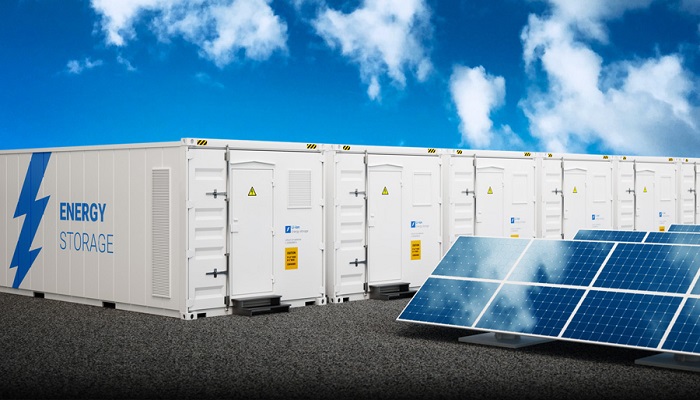The U.S. Department of Energy’s National Renewable Energy Laboratory- NREL went on to do an analysis that showed solar energy systems, when teamed with energy storage systems that can last up to 100 hours, happen to be more effective as well as cost-efficient than military-grade emergency diesel generators- EDGs in military applications over a period of 14 days. This analysis considered factors such as survivability as well as financial viability.
When comparing the failure rates of EDGs to those of solar plus LDES technologies using historical data, it is clear that solar plus LDES happen to be having higher probability of survival. In a fourteen-day standard military uptime evaluation, survivability probability of solar plus LDES goes beyond 95%, while survivability of diesel generators sits around 80%.
The study says that a solar-plus-storage system of a more appropriate size could go on to achieve almost perfect reliability. It could have an uptime of almost 100% over a 2-week timeframe. NREL differs between two types of battery energy storage Systems- BESS. The first type, called the Intermediate BESS, happens to be readily accessible for field testing and has a round-trip efficiency of 38%. The second type, the Goal BESS, is still in the conceptual phase, however, and is projected to have a round-trip efficiency of 48% while at the same time lowering energy storage system costs by 50%. However, it is important to note that the costs of the Goal BESS, which is currently being developed, may vary from the projected estimates in the future.
The analysis went on to reveal that the intermediate solar-plus-storage projects showed a positive net present value, indicating that they covered their costs in the long run. However, the EDGs did not share the same characteristics. The projected net present value of BESS-sized initiatives with 100% uptime over a 14-day window went on to indicate that they are expected to have a positive value throughout their lifetimes.
The report titled Long-Duration Energy Storage: Resiliency for Military Installations went on to furnish these findings by NREL.
The acting deputy assistant secretary of defense for environment and energy resilience at the Department of Defense- DOD, Michael McGhee, highlighted the importance of the NREL evaluation when the report was released.
The product being modeled happens to be Antora’s heat energy for thermophotovoltaic BESS. Electricity is utilized to heat the storage medium, which then goes on to be absorbed by thermophotovoltaic panels and converted into electricity by way of the standard process of using an inverter and connecting to the grid. One notable benefit of this system happens to be its ability to electrically separate storage as well as generation segments. This separation allows quick charging from either the grid or local solar sources, with zero impact on the thermal PV output.
In the current scenario, Antora’s BESS is undergoing beta field testing and has gone on to reach a Technology Readiness Level- TRL of 7. The analysis conducted by NREL presents robust evidence that enables the need for the DOD to increase field trials on military installations.
Survivability
The study goes on to identify three main risks that happen to be associated with DOD’s Emergency Diesel Generators- EDGs: Failure to start, availability, as well as mean time to failure The estimated failure-to-start rate is 0.94%, with a high availability rate of 99.5% as well as a mean time to failure of 1,100 hours. The resiliency rates of the diesel system happen to be 70% and 80% over a span of 14 days, assuming there is a continuous fuel supply. That said, it is indeed important to note that maintaining this supply can be quite an issue due to the fact that bases rarely have enough diesel stockpiled to last for 2 weeks.
NREL went on to conduct an assessment of EDGs at three military sites. The assessment took into account the major load duties of eight EDGs at Fort Bliss, seven at Patuxent River, as well as four at Holloman AFB. The systems happen to be responsible when it comes to meeting the critical loads of the site, which accounted for 18.5%, 23.5%, as well as 37.5% of the military base’s total electrical demand.
The analysis says that operational solar-plus-storage systems have a probability of more than 99% to continue running after grid outages during a 2-week period. This performance significantly exceeds that of diesel generators.
It estimates that around six acres of land are needed to generate one megawatt of electricity using solar panels. Apparently, the scarcity of land at the Patuxent River naval air station presents a challenge when it comes to upsizing energy storage. This necessity comes at a high cost, thereby making it more challenging for the energy storage system to recover its expenses in the long term. Nevertheless, the majority of bases do happen to have ample space to expand the scale of their solar installations.
Apart from this, the report took into account hybrid systems that integrated solar power with EDGs. The analysis revealed that, in certain cases, these systems pushed for exceptional resilience and survivability. The operations as well as maintenance of these multi-technology systems, however, do present additional risks and, at the same time, higher costs.
Many military branches happen to be executing tests on long-time energy storage. Navy and the Marine Corps are evaluating a multi-megawatt installation. The purpose of this advanced storage equipment and microgrid software is to come up with a unified system at the Air Force base. According to the Department of Defense, Redflow’s solution will go on to provide a reliable solar-plus-storage resource for managing peak energy demand as well as ensuring energy resilience.





































